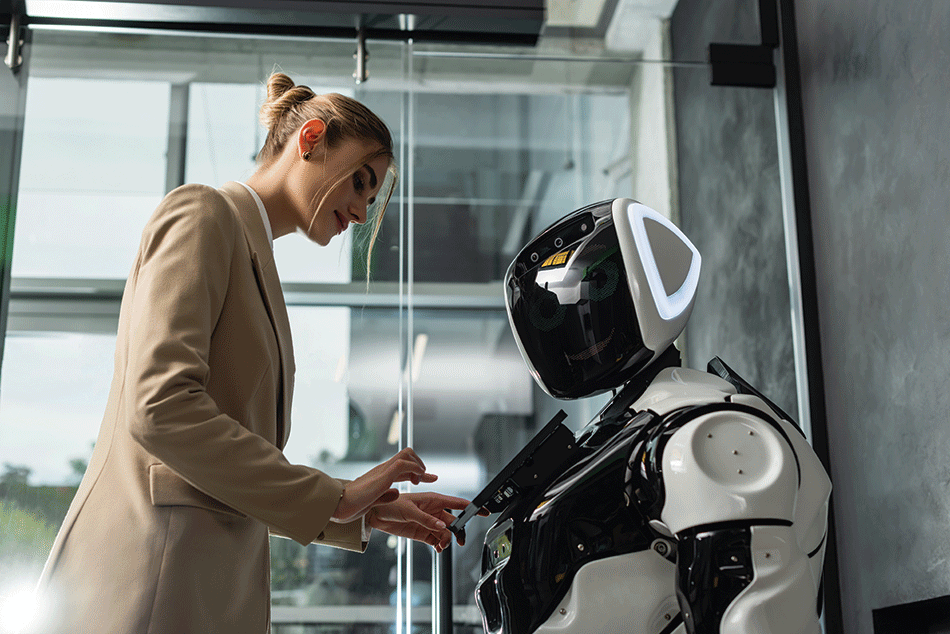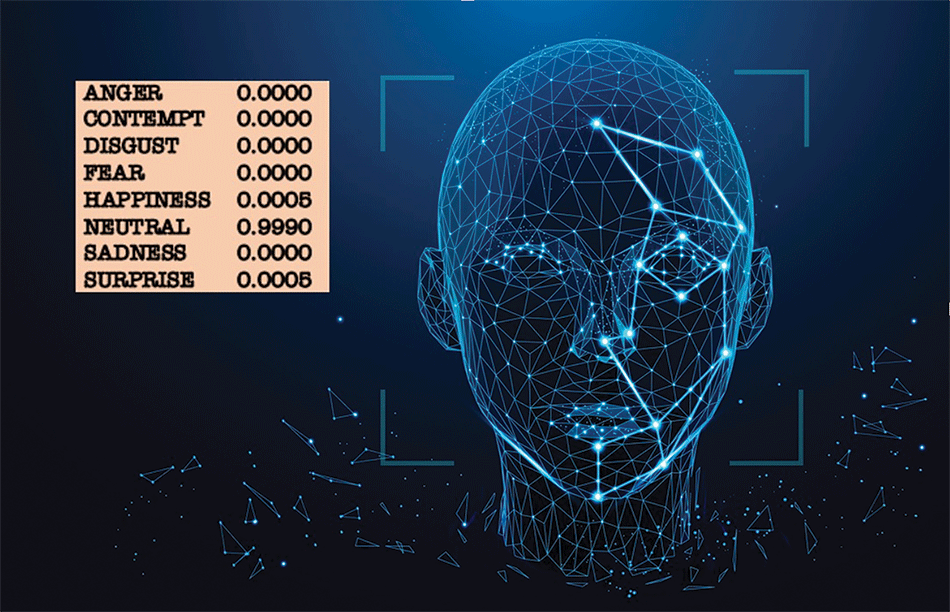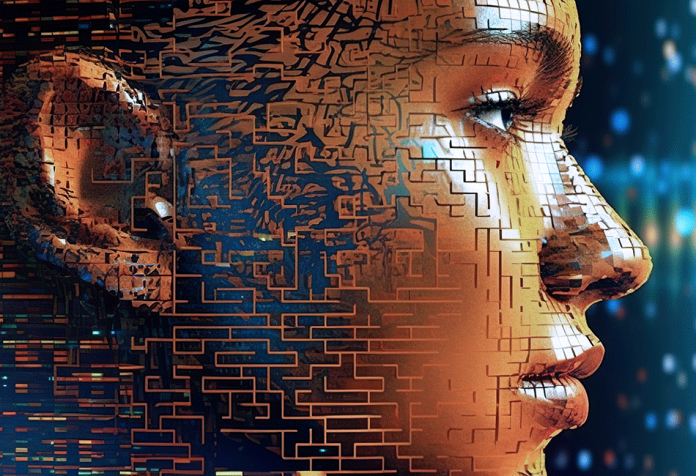While humans have always been able to claim mastery above machines in understanding emotions, it will not be like this for long as Emotion AI gives machines human-like emotional capabilities.
In recent years, a lot has been said about the significance of Emotional Intelligence (otherwise called EQ or EI) in Business and the possible perspectives of gaining it through sustainable training. Moreover, recently, the concept of Artificial Emotional Intelligence (emotion AI) has come to the forefront in ways that machines are able to decode, understand, interpret, and even replicate human emotions.
Artificial Intelligence has gone a long way since its first introduction with the earliest successful AI programme written in 1951 by Christopher Strachey, later director of the Programming Research Group at the University of Oxford, and has made many things possible that were considered unattainable in the past.
Emotion AI, also known as affective computing, is all about detecting emotions using artificial intelligence. Machines with this kind of emotional intelligence can understand not only the rational but also the emotive channels of human communication. That enables them to detect, interpret, and respond appropriately to both verbal and non-verbal signals in human communication.
The human brain is a very complex structure, where many different interrelated processes partake in our various multifold everyday life actions, which also make emotion experience, detection, and expression possible (Rostomyan, 2022a).
While deep learning and artificial neural networks have evolved through the years, they are only biologically inspired by the human brain, which again comes to prove the ultimate genuine structure and the limitless functioning possibilities of the genius human brain, which is probably irreplaceable, at least as for now.

As for human intelligence, social and emotional intelligence come almost automatically to us; we react on instincts and to external stimuli sinwce our emotional sensory system is what evolution has instilled in us for handling life (Goleman, 1995; Murray, 1964). Nonetheless, research shows that emotional intelligence can be enhanced in due course of time through training (Rostomyan, 2022b).
Whilst some of us are more sensually perceptive than others, we humans can easily interpret the emotions and feelings of those around us, since we all are endowed with the same emotion regulation and recognition systems that guide us throughout our entire lives (Rostomyan, 2022a).
AI is not a new concept. The idea of creating an intelligent being was proposed and discussed in various ways by writers and philosophers centuries before the computer was even invented.
Finlay and Dix (1996) describe that the earliest writers imagined their “artificial” beings created from stone: the Roman poet Ovid wrote a story of Pygmalion, the sculptor, whose statue of a beautiful woman was brought to life (the musical “My Fair Lady” is the more recent rendition of this fable, as well as the play Pygmalion by Irish playwright George Bernard Shaw, named after the Greek mythological figure).
Much later, in the age of industrial machines, Mary Shelley had Doctor Frankenstein manufacture a man from separate components and bring him to life through electricity. Other films, such as “Terminator”, present a vision of cyborg machines almost indistinguishable from humans. The same can be observed in the film series “Transformers” movies directed by Michael Bay, where some of the main characters are endowed with AI and, have the ability to transform, as well as read and respond to human emotions.
Early philosophers also considered the question of whether human intelligence can be reproduced in a machine. In 1642, Descartes argued that, although machines could pass as animals, they could never pass as humans. He went on to identify his reasons for this assertion, namely that machines lack the ability to use language and the ability to reason. Although, this statement is refutable.
To understand the concept of Emotion AI, we have first to refer to the notion of EI (EQ), namely Emotional Intelligence, which is our ability to perceive, understand, manage and use our emotions depending on the outward situation (Goleman, 1995; Rostomyan, 2022c).
The technology aims to improve natural communication between humans and machines to create an AI that communicates in a more authentic way, including displaying and processing human emotions.

Although the name may be misleading, Emotion AI does not refer to a weeping computer who has had a bad day or a bad week at work either. Emotion AI, also known as Affective Computing dates back to 1995 and refers to the branch of Artificial intelligence which aims to process, understand, and even replicate human emotions (Alkhadi, 2022).
In 2009, Rana el Kaliouby, and Picard founded “Affectiva”, an emotion AI company based in Boston, which specialises in automotive AI and advertising research. Using “Multimodal emotion AI”, which analyses facial expression, speech, and body language, they gain a complete insight into the customers’ mood(s). Their 90% accuracy levels are thanks to their diverse test sets of 6 million faces from 87 different countries used to train deep learning algorithms (Brookehouse, 2022).
AI and neuroscience researchers agree that current forms of AI cannot have their own emotions, but they can mimic and reproduce emotions such as empathy. The synthetic speech also helps reduce the robotic-like monotonous tone many of these services operate with and emit more realistic emotion.
As for human-machine communication, we can understand natural language by processing it. This field is called natural language processing or NLP for short. When it comes to natural language processing, machines have to learn algorithms to be able to process the intended meaning appropriately. So, as with humans, machines can produce more accurate insights into our emotions from video and speech than just text.
As for Microsoft, it has a whole team dedicated to developing new technologies that promote emotional resilience and well-being and will use artificial emotional intelligence to sense and respond to emotional states. The so-called HUE (human understanding and empathy) team is challenged with bringing artificial emotional intelligence to Microsoft products, specifically in the areas of empathetic search, human understanding in gaming, and creating more adaptive workspaces.
It goes without saying that humans have always been able to claim mastery above machines when it comes to understanding emotions. But according to research that will not be the case for way too long. While some may doubt that machines will encroach on emotion, those working in the field of artificial emotional intelligence say we are well on our way.
As the field continues to mature, many companies are actively using it to provide better services and products for their customers. Here are a few examples:
As mentioned earlier, Affectiva, an emotion recognition software company, helps advertisers and video marketers gather moment-to-moment facial expressions when watching a video with its product Affdex for Market Research and Data Analysis (Alkhaldi, 2022). This data is compared to the company’s emotion database and benchmarks for sales lift, brand recall, and more to give its customers such as Kellogg’s and CBS ideas to optimise their content, branding, and media presence.
Another company supporting marke-ters with artificial emotional intelligence solutions for market research is Realeyes. They use webcams, computer vision, and artificial intelligence to analyse viewers’ facial expressions when watching their videos. Realeyes can give critical feedback regarding the effectiveness of the creativity used in ad campaigns that helps companies such as Coca-Cola, Pepsi, and Hershey’s be more effective with their marketing strategies (Marr, 2021).
Emotion AI can, thus, be a form of assistive technology for people with autism who often struggle to pick up on the emotional cues of others when communicating. A wearable device could help those with autism “read” the emotions of others and then respond appropriately to the other person’s needs in accordance with their experienced positive/negative emotions (Garcia-Garcia, Penichet, Lozano, et al., 2022).
Practical Implications: The Enormous Potential of Emotion AI in Marketing and Sales
Emotions have, in fact, an enormous influence on our verbal and non-verbal behaviour (Rostomyan, 2022a). This includes not only our everyday life experiences but also our behaviour in consuming products and choosing services. Thence, emotional behaviour can also be seen along the customer journey from a marketing perspective.
- Hence, they should have a system, which can:
- learn from every communicative interaction
- (including emotional ones),
- understand both the rational and emotive
- pathways of human communication,
- sense intentions, motivations, emotions,
- feelings, desires, and aspirations,
- analyse the expressions of emotions in the customers,
- make deductions accordingly,
- respond appropriately.
About the Author
 Dr. Anna Maria Rostomyan is an Assistant Professor, EQ Coach, International Author, Researcher and Lecturer at the Berlin School of Business and Innovation (BSBI) in Berlin. She defended her PhD, done in collaboration with the University of Fribourg (Switzerland) and Yerevan State University (Armenia) having been awarded an Academic Swiss Caucasus Net research fellowship, earning the highest distinction. She is the author of 5 books and 30 publications worldwide with about 1000 readers of around 100 nationalities.
Dr. Anna Maria Rostomyan is an Assistant Professor, EQ Coach, International Author, Researcher and Lecturer at the Berlin School of Business and Innovation (BSBI) in Berlin. She defended her PhD, done in collaboration with the University of Fribourg (Switzerland) and Yerevan State University (Armenia) having been awarded an Academic Swiss Caucasus Net research fellowship, earning the highest distinction. She is the author of 5 books and 30 publications worldwide with about 1000 readers of around 100 nationalities.
References
- Alkhaldi, Nadejda (2022). Emotional AI: Are Algorithms Smart Enough to Decipher Human Emotions? IoT for All. Available at: https://www.iotforall.com/emotional-ai-are-algorithms-smart-enough-to-decipher-human-emotions
- Brookehouse, Olivia (2022). Can Artificial Intelligence Understand Emotions? Telefónica Tech. Accessed on: 09.03.2023, Available at: https://business.blogthinkbig.com/can-artificial-intelligence-understand-emotions/
- Finlay, J. and A. Dix (1996). An Introduction to Artificial Intelligence. Boca Raton, Taylor and Francis Group.
- Garcia-Garcia, J.M., Penichet, V.M.R., Lozano, M.D. et al. (2022). Using Emotion Recognition Technologies to Teach Children with Autism Spectrum Disorder How to Identify and Express Emotions. Univ Access Inf Soc 21, pp. 809–825. https://doi.org/10.1007/s10209-021-00818-y
- Goleman, Daniel (1995). Emotional Intelligence. New York, Toronto, London, Sydney, Auckland, Bantam Books.
- Marr, Bernard (2021). “What is Artificial Emotional Intelligence?”, accessed on: 15.12.2022, available at: https://bernardmarr.com/what-is-artificial-emotional-intelligence/
- Murray, Edward (1964). Motivation and Emotion. New Jersey, Prentice-Hall, Inc.
- Rostomyan, Anna (2022a). The Ultimate Force of Emotions in Communication: A Linguo-cognitive Analysis of Verbal and Non-verbal Expressions of Emotions (on the material of English). Düren, Shaker Verlag.
- Rostomyan, Anna (2022b). Emotional Intelligence as a Keystone towards Success. Moldova, Generis Publishing.



































